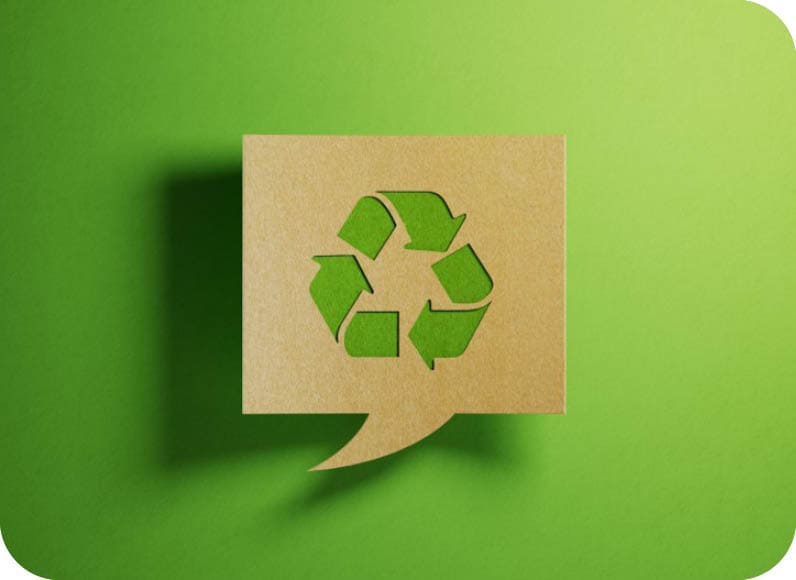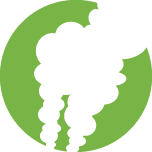
Progress compared to prior year
- Scope 1 and 2 emissions (market-based) reduced by 9.5% on a head count basis per employee
- Total electricity emissions
decreased by 9%
- Waste to landfill decreased by 11%
- Water emissions decreased by 47%
Key continuous improvement highlights
- Expansion of our reporting boundary to include our Vienna and Luxembourg offices
- Commencing activity-based data collection from specific suppliers of purchased goods and services to start to transition from using a solely spend-based methodology
- Receiving high data quality scores
- Eight of our offices are now powered by electricity that is 100% renewably sourced
However, we did see emissions
increase across:
- Business travel – our actual total miles travelled and consumption, particularly regarding flights, did decrease. However, our total emissions increased mainly because of decisions on class of travel (as well as changing emissions factors and use of a more sophisticated methodology around measuring radiative forcing emissions).
- Purchased goods and services – continuing growth of our business revenue turnover and operational footprint has resulted in an increase in spend on procuring purchased goods and services. We are currently calculating our supply chain emissions using largely a spend-based methodology (like many businesses). However, this means that business growth does translate into an overall increase in our scope 3 category 1 emissions, which we need to address.

Progress compared to prior year
- Scope 1 and 2 emissions (market-based) reduced by 9.5% on a head count basis per employee
- Total electricity emissions decreased by 9%
- Waste to landfill decreased by 11%
- Water emissions decreased by 47%
- Purchased goods and services – continuing growth of our business revenue turnover and operational footprint has resulted in an increase in spend on procuring purchased goods and services. We are currently calculating our supply chain emissions using largely a spend-based methodology (like many businesses). However, this means that business growth does translate into an overall increase in our scope 3 category 1 emissions, which we need to address.
However, we did see emissions
increase across:
- Business travel – our actual total miles travelled and consumption, particularly regarding flights, did decrease. However, our total emissions increased mainly because of decisions on class of travel (as well as changing emissions factors and use of a more sophisticated methodology around measuring radiative forcing emissions).
Key continuous improvement highlights
- Expansion of our reporting boundary to include our Vienna and Luxembourg offices
- Commencing activity-based data collection from specific suppliers of purchased goods and services to start to transition from using a solely spend-based methodology
- Receiving high data quality scores
- Eight of our offices are now powered by electricity that is 100% renewably sourced

However, we did see
emissions increase across:
- Expansion of our reporting boundary to include our Vienna and Luxembourg offices
- Commencing activity-based data collection from specific suppliers of purchased goods and services to start to transition from using a solely spend-based methodology
- Receiving high data quality scores
- Eight of our offices are now powered by electricity that is 100% renewably sourced
- Scope 1 and 2 emissions (market-based) reduced by 9.5% on a head count basis per employee
- Total electricity emissions decreased by 9%
- Waste to landfill decreased by 11%
- Water emissions decreased by 47%
Progress compared to prior year
Key continuous improvement highlights
- Business travel – our actual total miles travelled and consumption, particularly regarding flights, did decrease. However, our total emissions increased mainly because of decisions on class of travel (as well as changing emissions factors and use of a more sophisticated methodology around measuring radiative forcing emissions).
- Purchased goods and services – continuing growth of our business revenue turnover and operational footprint has resulted in an increase in spend on procuring purchased goods and services. We are currently calculating our supply chain emissions using largely a spend-based methodology (like many businesses). However, this means that business growth does translate into an overall increase in our scope 3 category 1 emissions, which we need to address.

However, we did see
emissions increase across:
- Expansion of our reporting boundary to include our Vienna and Luxembourg offices
- Commencing activity-based data collection from specific suppliers of purchased goods and services to start to transition from using a solely spend-based methodology
- Receiving high data quality scores
- Eight of our offices are now powered by electricity that is 100% renewably sourced
- Scope 1 and 2 emissions (market-based) reduced by 9.5% on a head count basis per employee
- Total electricity emissions decreased by 9%
- Waste to landfill decreased by 11%
- Water emissions decreased by 47%
Progress compared to prior year
Key continuous improvement highlights
- Business travel – our actual total miles travelled and consumption, particularly regarding flights, did decrease. However, our total emissions increased mainly because of decisions on class of travel (as well as changing emissions factors and use of a more sophisticated methodology around measuring radiative forcing emissions).
- Purchased goods and services – continuing growth of our business revenue turnover and operational footprint has resulted in an increase in spend on procuring purchased goods and services. We are currently calculating our supply chain emissions using largely a spend-based methodology (like many businesses). However, this means that business growth does translate into an overall increase in our scope 3 category 1 emissions, which we need to address.













































